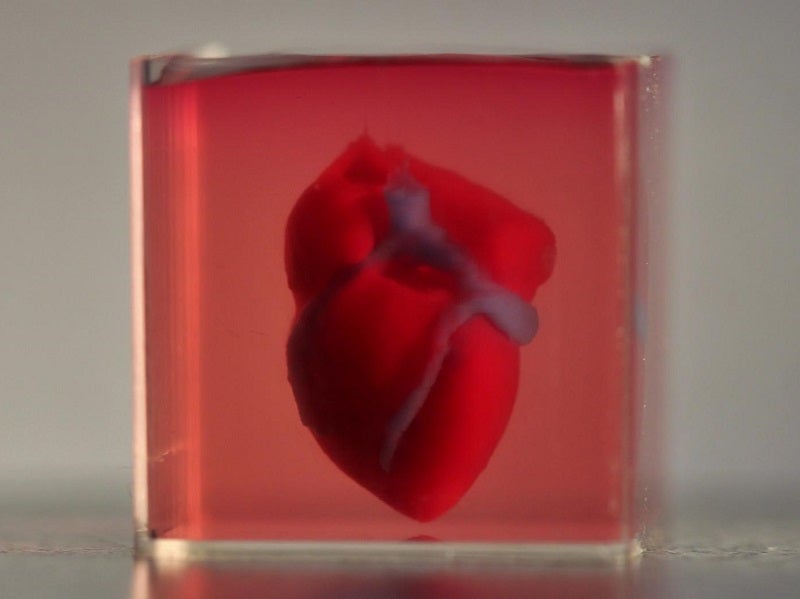
Currently, there are 6,153 people waiting for an organ transplant in the UK, and 3,474 have received one since April last year. However, over 400 people died in 2019 while waiting for a transplant and the country is facing a significant shortage of donors, particularly from black, Asian and ethnic minority (BAME) backgrounds.
Now, the UK is introducing a new law where all eligible adults will be automatically enrolled as organ donors unless they choose to opt out, transitioning away from the previous system where people needed to opt in.
Even when a heart, lung or kidney is acquired and transplanted, recipients’ bodies can reject the new organ. While they go on to take immunosuppressive drugs to minimise the risk of this happening, these aren’t always successful and come with risks of their own.
What if there was a better way? In the future, 3D bioprinting technologies could offer hope to people who currently rely on donor organs. Artificial organs printed using bioink made from a patient’s own cells could eliminate the need for transplant altogether, removing the need for organ donors and reducing the risk of tissue rejection.
In a survey of 1,555 Verdict Medical Devices readers, 25% of respondents said that bioprinting would replace the need for donor organs within ten to 20 years, with a further 24% responding that it would be within just ten years. That means just under half of the people surveyed expect to see bioprinted organs become a routine part of healthcare by 2040 at the latest.

How well do you really know your competitors?
Access the most comprehensive Company Profiles on the market, powered by GlobalData. Save hours of research. Gain competitive edge.

Thank you!
Your download email will arrive shortly
Not ready to buy yet? Download a free sample
We are confident about the unique quality of our Company Profiles. However, we want you to make the most beneficial decision for your business, so we offer a free sample that you can download by submitting the below form
By GlobalDataWhat is bioprinting?
Much like 3D printing plastic objects, bioprinting is a form of additive manufacturing where the product – in this case a human organ – is generated layer upon layer.
Bioprinting can be divided into four categories: inkjet-based bioprinting, pressure-assisted bioprinting, laser-assisted bioprinting, and stereolithography. Inkjet-based bioprinting works similarly to a conventional desktop printer, but with bioink being deposited on to a hydrogel substrate or culture dish instead of paper. In pressure-assisted bioprinting, biomaterials in a more paste-like form are plunged through a microscale nozzle orifice or a microneedle onto a stationary substrate, layering to form complete 3D patterns and constructs. Laser-assisted bioprinting uses a laser as the energy source to deposit biomaterials onto a substrate. Meanwhile, stereolithography uses a liquid, photo-sensitive polymer formulation which is solidified upon illumination with digital light.
The organ which appears to have the most promise for bioprinting, due to the non-invasive nature of the associated procedures, is skin.
Wake Forest School of Medicine has designed a prototype printer that can print skin cells directly on to a burn wound. It’s thought a patch of skin only 10% of the size of a given burn could be sufficient to grow enough bioink cells to patch up the wound. Meanwhile, researchers at the Rensselaer Polytechnic Institute in New York have been growing vascularised skin-grafts using a combination of two different bioinks. They’ve only been grafted onto the backs of immunodeficient mice thus far, but could be used to replace skin grafts altogether.
Internal organs: still a hill to climb
Printing an internal organ with integrated tissue function is far more complex.
A team of scientists at Tel Aviv University was able to grow a 3D-printed heart from human tissue in April 2019, complete with blood vessels, ventricles and chambers. The main downside – the heart was about the size of a cherry.
To make the hearts, a biopsy was taken from patients’ fatty tissue. Cell tissue was then extracted and reprogrammed into pluripotent stem cells, which can be programmed to grow into any kind of cell or tissue, while extracellular molecules like collagen and glycoproteins were processed into a personalised hydrogel to serve as the printer ink.
The cells were then differentiated into cardiac or endothelial cells to create patient-specific, immune-compatible cardiac patches with blood vessels and subsequently an entire heart.
While the individual cells in the heart are able to contract, they are unable to do so together. If the researchers can train the heart to pump properly, they plan to try and transplant them into animal models.
Tel Aviv University researcher Nadav Noor, the first author of the study, says: “The motivation for this research was the shortage of donor organs for transplantation so we are driven to realise this technology. However, it will take many years to achieve functioning organs.
“To date, although the printed hearts contain living and beating cells which are located in the right positions, these tissues require prolonged cultures in highly controlled environments for the cells to form interaction and for the [whole] organ to beat synchronously. This is the next stage which we are currently working on and which we presume to be the most challenging in the process of engineering functional organs.”
Printed organs: not coming as soon as we thought
It’s apparent that bioprinting has come along in leaps and bounds in recent years, but the headlines promising that human hearts will printed and transplanted in no time at all may be overstating the case somewhat.
When organ transplants can be so gruelling to wait and prepare for, it’s not exactly surprising that an alternative to the current system attracts so much hype, but bioprinting still faces several obstacles. Limited options available for biomaterials and the difficulty of mimicking the vasculature of organs mean the process simply isn’t as straightforward as 3D printing solid plastics or simpler biological materials.
That said, a small number of patients are walking around today with 3D bioprinted bladders – seeing as a bladder is essentially just a balloon, this is much easier to create in a lab. But it’ll likely be several more decades at least before we can bioprint the more complex organs used in donor transplant surgeries.







